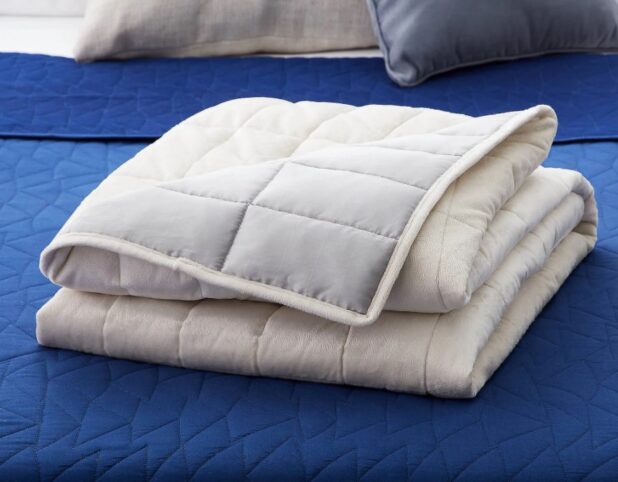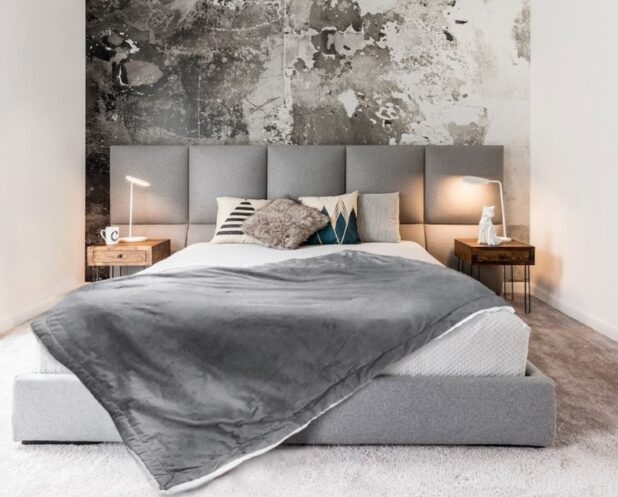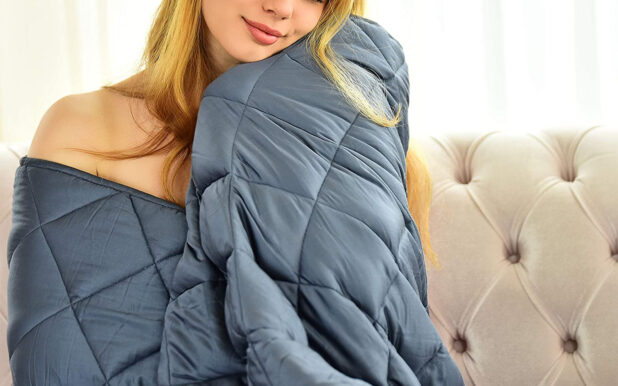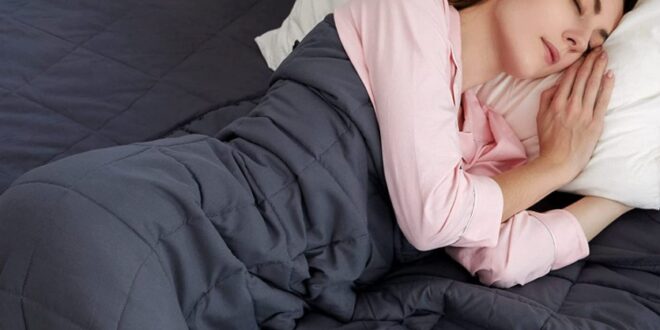If you toss and turn at night due to stress, worry, or other issues, a weighted blanket may provide some help to individuals suffering from exacerbated symptoms. Over the last few years, weighted blankets have become increasingly popular, and they are also known as gravity blankets.
Many people have discovered that sleeping with a weighted blanket helps them sleep better and for more extended periods of time. Even some studies suggest that these mystical blankets can help children with ADHD perform better. As a result, this comprehensive guide will tell you everything you need to know about the weighted blanket and its advantages.
Table of Contents
1. What is a Weighted Blanket?

First off, we will start with what is a weighted blanket? A weighted blanket is exactly what the name suggests: it’s a thick blanket. Poly beads, metal pellets, or tiny glass beads are used to fill the duvet. However, what makes the product so unique?
A weighted blanket’s weight is intended to provide a relaxing effect on the sleeper who utilizes it. It gives you a cozy feeling that may help you fall asleep sooner. Check here if you are searching for the perfect weighted blankets for you.
2. The Advantages of a Weighted Blanket
The advantages of using a weighted blanket are numerous. Maybe you’ve had a long and stressful day at work, and all you want to do now is forget about it. A weighted blanket can assist you in reaching a profound level of relaxation and tranquillity.
Relieves Anxiety
Dealing with anxious sensations can be a real pain. It may even be paralyzing in some situations, impairing your capacity to function normally in everyday life. You might want to try a weighted blanket in addition to counseling and medicine. A blanket is unlikely to wash away all of your worries, such as that bill you have to pay tomorrow, but it can make you feel better.
Helps With Insomnia
According to a new study, a weighted blanket helped patients fall a sleep faster and more profoundly during the night. Anxiety and sleep have a strong connection. You may feel more worried if you don’t get enough sleep, and you may not sleep well if you’re anxious. However, a weighted blanket might help you relax and feel secure.
3. What Should the Weight of a Weighted Blanket Be?

A weighted blanket should be about 10% of a sleeper’s entire body weight in most cases. For example, if you weigh 120 pounds, a 12-pound weighted blanket might be appropriate. Of course, what you choose for yourself can differ from a standard rule of thumb. You could choose a less weighted blanket that allows you to move around more freely. Alternatively, you may want a heavier weight that provides the desired snugness.
4. What to Look for When Purchasing a Child’s Weighted Blanket?
Always keep in mind that children should only use a weighted blanket unsupervised. Infants or young children should not use weighted blankets since they are unsafe and too heavy to manage alone. When buying a weighted blanket for your child, it’s best to err on the side of caution. However, if your adolescent can hold and manage a weighted blanket, the 10% rule usually applies.
5. What to Look for When Purchasing an Adult’s Weighted Blanket?

A weighted blanket’s exterior fabric, just like conventional blankets, can be produced of various fabrics. So, while choosing a weighted blanket, think about what kinds of materials you prefer and try to match the materials to your specific reasons for wanting one. When deciding which material is best for you, consider the level of softness, breathability, and texture you prefer. Consider the fact that some materials will add additional weight to the blanket.
6. What Material Should You Pick?
Polyester, cotton blends, flannel, rayon, fleece, cotton, and mink are some of the most common textiles used for the outer textures of weighted blankets. Naturally, some of these materials will be warmer than others. Thus, depending on your region’s climate, certain fabrics will be better suited to you than others.
Most manufacturers use quilting to make most weighted blankets. That implies there will be layers of material woven together so that the pellets inside the blanket are better supported and stay in place. The stitching prevents the beads from sliding around and making the blanket unpleasant to wrap and imbalanced.
The pellets will be distributed throughout the blanket in pockets. Because it’s critical that the weight is distributed uniformly, packing the pockets requires accuracy and ability. Manufacturers must put a consistent amount of weight into each section to make the blanket as effective as possible.
The pellets are ordinarily tiny and made of a hypoallergenic and non-toxic plastic called polypropylene. Glass beads can also be found in some of these blankets, but they aren’t as frequent. The pockets prevent the pellets from traveling across the entire surface of the blanket, forbidding uneven weight.
When choosing a weighted blanket, keep in mind that the outer material will influence how much you can feel the stuffing that gives the blanket its weight with varying fabric thickness.
As a result, some textiles hide the pellets better than others. Choose a thicker fabric if you want a smoother feel to your blanket. A fleece or flannel blanket will hide the beads far better than a cotton blanket.
Conclusion
Weighted blankets are being utilized by individuals in various ways to help them sleep better, manage stress, relieve back pain, calm kids, cope with PTSD, and relieve symptoms among people with ADHD. These blankets are being used by medical experts such as therapists and rehabilitation specialists in their professions to aid patients with various ailments.
As more research takes place, the connections between the benefits of weighted blankets and how those benefits are delivered are becoming more apparent. A weighted blanket might be the answer to your prayers if you want to feel less stressed daily or if you want to obtain better quality sleep.
 World Magazine 2024
World Magazine 2024






